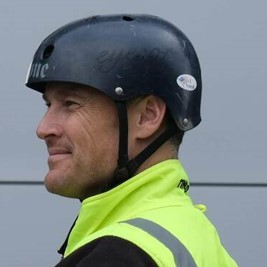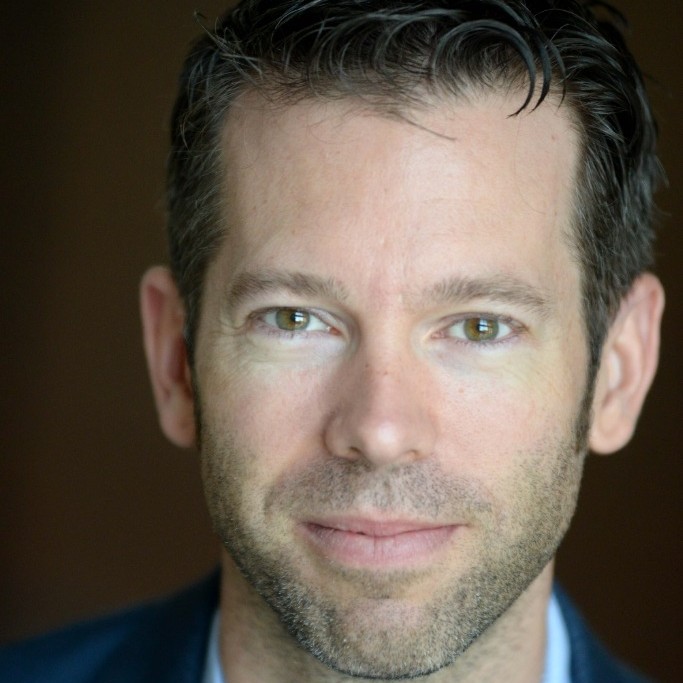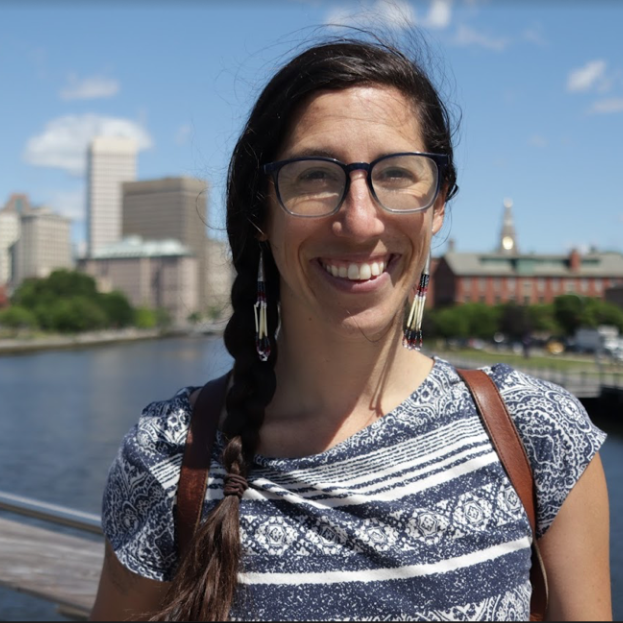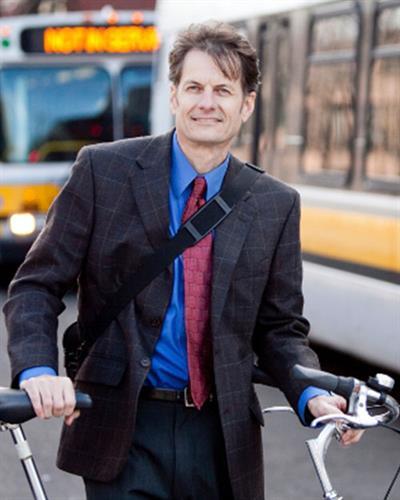This year’s National Association of City Transportation Officials (NACTO) Designing Cities Conference was a great success for the Tufts University Urban and Environmental Policy and Planning community. Held in Boston, Cambridge, and Somerville this September, the conference drew nearly 1,000 city transportation officials, planners, and practitioners to discuss advances in urban transportation. Among those in attendance were several Tufts UEP alums and faculty who offered their expertise on a range of topics for improving transportation in Greater Boston.

Brad Rawson, the City of Somerville Director of Mobility in the Mayor’s Office of Strategic Planning & Community Development, presented on the importance of neighborly collaboration in transportation planning and project development, summarized below:
With most transportation projects, your jurisdiction’s decisions impact your community members and your neighbors. In the Boston, Cambridge, and Somerville metro regions, the geography of local boundaries makes neighborly collaboration a critical part of transportation planning and project development. This session brought together local leaders to discuss a regional vision and the importance of building relationships. Highlighted in the session were examples of collaborative problem-solving and shared commitments to sustainable transportation, such as the Massachusetts Avenue Bridge, Vision Zero, the transit fare policy, and the bus network redesign.

Kris Carter, Co-Chair of the Mayor’s Office of New Urban Mechanics, presented in two sessions summarized below:
First session: “Increasing vehicle size and weight and poor visibility from the drivers’ seat are exacerbating the traffic fatality crisis on U.S. streets. But, while vehicle design itself is regulated federally, cities still have tools at their disposal to help ensure that the vehicles operating on city streets are safe for people walking, biking, and taking transit.” In this panel, “Direct Vision” experts, elected officials and policy-makers, and city transportation and fleet management staff explored how cities can address vehicle size and visibility to help keep their residents safe.
Second session: “From the moment the first TNC hit the streets in 2009, cities have had to contend with, accommodate, and partner with the private sector to advance transportation options in cities. Over a decade later, staff inboxes are full with all the latest disruptive, new, innovative technologies. While we need big visionary thinking to dramatically advance the state of transportation, we also need to root pilots in the city goals around safety, equity, and true partnership (among others).” In this session, we heard from three cities that championed innovation in government-friendly ways to pioneer new technologies that advanced transportation goals in their communities.

Liza Burkin, Lead Organizer of Providence Streets Coalition, presented her thesis research on two-way biking on narrow one-way streets. The groundbreaking thesis results provide guidance and policy recommendations that are being reviewed for inclusion in the newest version of the NACTO Bicycle Design Guides.
Alex Ellis (Krogh Grabbe), Principal Planner of the City of Providence, and Nathaniel Fink, Active Transportation/Vision Zero Planner of the City of Boston, presented best practices for creating inclusive bike count programs, summarized below:
“In urban planning, what we count—and how we count it—matters. The choices cities make about when, where, and how to measure trips can make or break a bike network.” Building from NACTO’s 2022 Making Bikes Count practitioner’s paper, this session featured city experts sharing their best practices for creating truly inclusive, transparent bike count programs.”
Andrew McFarland, Manager of Bus System Enhancements at MBTA, presented, “Cities across North America are proving that dedicated bus lanes are one of the most time and cost-effective measures to improve transit speed and reliability and win back riders. With record bus lane expansion over the past three years, there are so many projects to celebrate. This session will highlight some of the recent bus lane implementations in Austin, Honolulu, New York, Toronto, and Washington D.C., rider benefits, and each agency’s plans to continue scaling their bus priority programs in the future.”

Mark Chase, UEP Lecturer, gave conference goers a tour of Somerville’s Neighborway network. Participants experienced how quiet streets can be key connectors for community building and active transportation. Data collection and local participation in planning and design were key elements of the tour.
It was an excellent opportunity for Tufts UEP to share its knowledge with the broader community of city planners and transportation officials. We’re excited to keep this tradition of success alive in future conferences.
Great to see – send some UEP grads to Worcester They have a growing and progressive planning department and several open positions both in their new transportation department as well as their department of sustainability and resilience. So please spread the word Worcester is on the move and they need good people
Comments are closed.